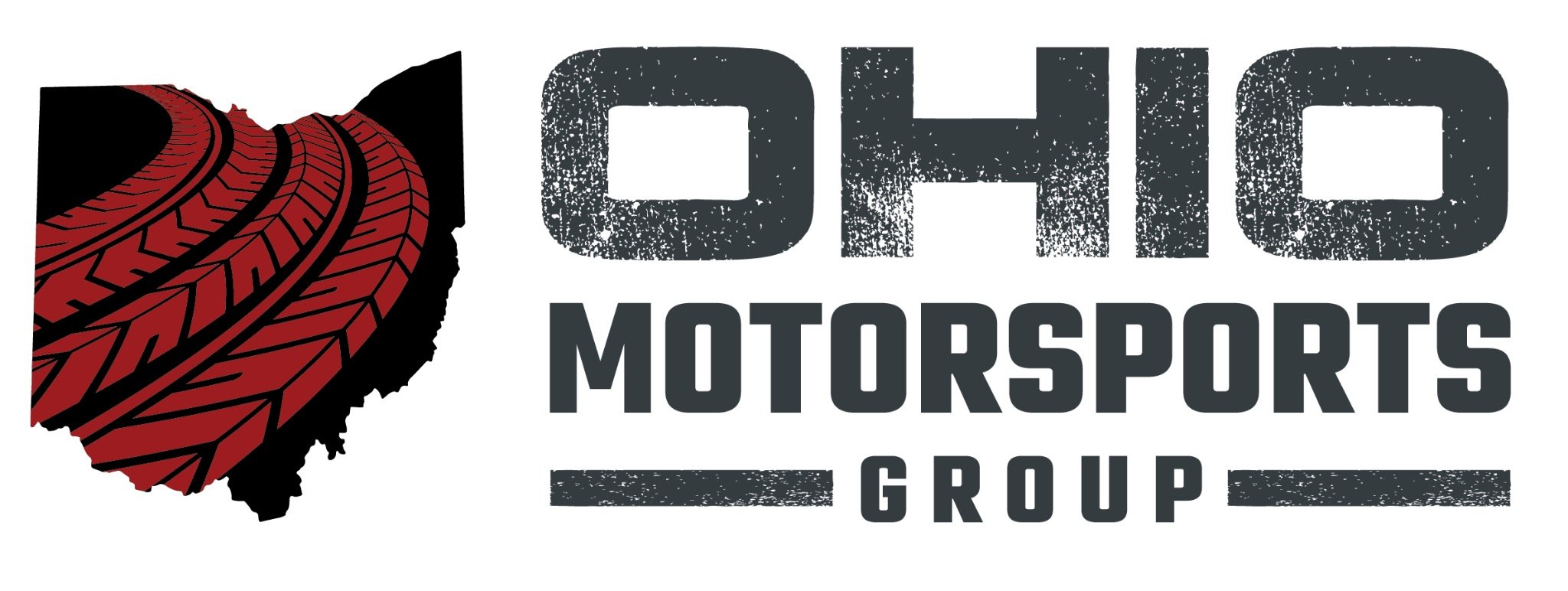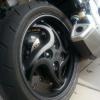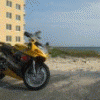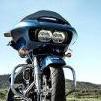Search the Community
Showing results for 'challenge all aspects of life'.
-
My debit card is visa thanks brah...and I have all that shit too with better everything else...my credit union challenges your bank to all aspects of life
-
stop the foreplay. Do not pass go. Do not collect 45064245525 pesos. Go directly to "challenge you at all aspects of life"
-
You should probably go ahead and formally challenge me at all aspects of life
-
cuz brah, come on now! you TOTALLY served tbutera by challenging him at all aspects of life. I'm on YOUR side! and why do you say such things full of hurtedness? don't be so mad, brah. so much mad-ness.
-
so... what you're saying is, you challenge him at all aspects of life? pretty please?
-
I just lold at your ignorance. At what point did I say I was a teller? Never have I said I was a teller. Way to make yourself look like a true dumbass for speculating. As a matter of fact I am a fraud anaylist for small buisnesses in the midwest. Its a lil more challenging than handeling retards like yourself who have a hard time comprehending the differnce between a deposit and a withdrawl. Smack yourself twice for sayin racquetball (one word google it mr smarts) is an activity, seeing as there is a pro tour just like tennis and golf. And since you have no idea, people do get there autographs, people do follow these players, and there is a lot of $ going through the sport. I may not be getting autographs but seeing as I've been on multiple magazines, and won countless awards and have an all american letter, and let's not forget a national championship, doesn't mean one day I won't be signing the autographs for people who ask. No its not basketball, or football, or even golf, but it is a sport. Maybe because your tiny little brain can't comprehend the aspect, rules, or thought pattern that goes behind it all, doesn't make it an activity. What have you done with your life? Where did you graduate college? Was it paid for by the school? Did anyone. Provide you with clothes, shoes, energy drinks, power bars, just so you can promote there product? I don't think so. And as for me taking bs classes, I have 205 credit hrs, more than enough to graduate. I'm dragging it out until spring quater so I can graduate in the shoe, go to tempe arizona again and defend my title, and because they are paying for it. So next time you wanna talk shit about how dumb I am, look in the mirror. You are bashing someone who is becoming succesful in multiple areas in their life. But I understand your ignorance leads you to believe your correct because your an old fuck whose glory days are dead and gone. When I get a pro contract next year ill make sure to send you a copy of it so you can see how much I get paid for my " activities". What do you get for yours? Lt1 parts that collect dust and mold? :gtfo:
-
why? if michael j fox challenged us at all aspects of life, he would win, including:
-
::rabble rabble rabble:: I challenge you to all aspects of life. Nah, I'm done. Credit where credit is due and all that. Power adders aside. I'm an American power fanboy, you like Nissans. That's just how it is.
-
Challenge to all aspects of life!
-
Do I smell a challenge to all aspects of life?
-
I challenge everyone in this thread at all aspects of life (at least until jbot posts) I am better than you because I have machines that go faster than yours when I'm in them.
-
It's about challenging people to all aspects in life. And winning.
-
in before jbot makes the challenge to all aspects of life
-
now, i'm going to need one of you to challenge the other at all aspects of life.
-
i do believe he just challenged you at all aspects of life. we have reached the 3rd stage of epic thread OP thuggery. Here are the stages of epic thread OP thuggery, fyi: step 1. ass hattery step 2. angry outbursts, with swearing, threatening to "beat yo ass", etc step 3. "I challenge you at all aspects of life" step 4. OP delivers step 5. profit waiting for step 4. please continue.
-
http://www.motorcyclistonline.com/flashback/122_0911_the_pace_nick_ienatsch/index.html The Pace Separating street from track, riding from racing February, 2009 By Nick Ienatsch Racing involves speed, concentration and commitment; the results of a mistake are usually catastrophic because there's little room for error riding at 100 percent. Performance street riding is less intense and further from the absolute limit, but because circumstances are less controlled, mistakes and over aggressiveness can be equally catastrophic. Plenty of roadracers have sworn off street riding. "Too dangerous, too many variables and too easy to get carried away with too much speed," track specialists claim. Adrenaline-addled racers find themselves treating the street like the track, and not surprisingly, they get burned by the police, the laws of physics and the cold, harsh realities of an environment not groomed for ten-tenths riding. But as many of us know, a swift ride down a favorite road may be the finest way to spend a few free hours with a bike we love. And these few hours are best enjoyed riding at The Pace. A year after I joined Motorcyclist staff in 1984, Mitch Boehm was hired. Six months later, The Pace came into being, and we perfected it during the next few months of road testing and weekend fun rides. Now The Pace is part of my life - and a part of the Sunday morning riding group I frequent. The Pace is a street riding technique that not only keeps street riders alive, but thoroughly entertained as well. THE PACE The Pace focuses on bike control and de-emphasizes outright speed. Full-throttle acceleration and last minute braking aren't part of the program, effectively eliminating the two most common single-bike accident scenarios in sport riding. Cornering momentum is the name of the game, stressing strong, forceful inputs at the handlebar to place the bike correctly at the entrance of the turn and get it flicked in with little wasted time and distance. Since the throttle wasn't slammed open at the exit of the last corner, the next corner doesn't require much, if any, braking. It isn't uncommon to ride with our group and not see a brake light flash all morning. If the brakes are required, the front lever gets squeezed smoothly, quickly and with a good deal of force to set entrance speed in minimum time. Running in on the brakes is tantamount to running off the road, a confession that you're pushing too hard and not getting your entrance speed set early enough because you stayed on the gas too long. Running The Pace decreases your reliance on the throttle and brakes, the two easiest controls to abuse, and hones your ability to judge cornering speed, which is the most thrilling aspect of performance street riding. YOUR LANE IS YOUR LIMIT Crossing the centerline at any time except during a passing maneuver is intolerable, another sign that you're pushing too hard to keep up. Even when you have a clean line of sight through a left-hand kink, stay to the right of the centerline. Staying on the right side of the centerline is much more challenging than simply straightening every slight corner, and when the whole group is committed to this intelligent practice, the temptation to cheat is eliminated through peer pressure and logic. Though street riding shouldn't be described in racing terms, you can think of your lane as the race track. Leaving your lane is tantamount to a crash. Exact bike control has you using every inch of your lane if the circumstances permit it. In corners with a clear line of sight and no oncoming traffic, enter at the far outside of the corner, turn the bike relatively late in the corner to get a late apex at the far inside of your lane and accelerate out, just brushing the far outside of your lane as your bike stands up. Steer your bike forcefully but smoothly to minimize the transition time. Don't hammer it down because the chassis will bobble slightly as it settles, possibly carrying you off line. Since you haven't charged in on the brakes, you can get the throttle on early, before the apex, which balances and settles your bike for the drive out. More often than not, circumstances do not permit the full use of your lane from yellow line to white line and back again. Blind corners, oncoming traffic and gravel on the road are a few criteria that dictate a more conservative approach, so leave yourself a three or four foot margin for error, especially at the left side of the lane where errant oncoming traffic could prove fatal. Simply narrow your entrance on a blind right-harder and move your apex into your lane three feet on blind left turns in order to stay free of unseen oncoming traffic hogging the centerline. Because you're running at The Pace and not flat out, your controlled entrances offer additional time to deal with unexpected gravel or other debris in your lane; the outside wheel track is usually the cleanest through a dirty corner since a car weights its outside tires most, scrubbing more dirt off the pavement in the process, so aim for that line. A GOOD LEADER, WILLING FOLLOWERS The street is not a racing environment, and it takes humility, self assurance and self control to keep it that way. The leader sets the pace and monitors his mirrors for signs of raggedness in the ranks that follow, such as tucking in on straights, crossing over the yellow line and hanging off the motorcycle in the corners, If the leader pulls away, he simply slows his straight way speed slightly but continues to enjoy the corners, thus closing the ranks but missing none of the fun. The small group of three or four riders I ride with is so harmonious that the pace is identical no matter who's leading. The lead shifts occasionally with a quick hand sign, but there's never a pass for the lead with an ego on the sleeve. Make no mistake, the riding is spirited and quick in the corners. Anyone with a right arm can hammer down the straights; it's proficiency in the corners that makes The Pace come alive. Following distances are relatively lengthy, with the straightaways taken at more moderate speeds, providing the perfect opportunity to adjust the gaps. Keeping a good distance serves several purposes, besides being safer. Rock chips are minimized, and the police or highway patrol won't suspect a race is in progress. The Pace's style of not hanging off in corners also reduces the appearance of pushing too hard and adds a degree of maturity and sensibility in the eyes of the public and the law. There's a definite challenge to cornering quickly while sitting sedately on your bike. New rider indoctrination takes some time because The Pace develops very high cornering speeds and newcomers want to hammer the throttle on the exits to make up for what they lose at the entrances. Our group slows drastically when a new rider joins the ranks because our technique of moderate straightaway speed and no brakes can suck the unaware into a corner too fast, creating the most common single bike accident. With a new rider learning The Pace behind you, tap your brake lightly well before the turn to alert him and make sure he understands there's no pressure to stay with the group. There's plenty of ongoing communication during The Pace. A foot off the peg indicates debris in the road, and all slowing or turning intentions are signaled in advance with the left hand and arm. Turn signals are used for direction changes and passing, with a wave of the left hand to thank the cars that move right and make it easy for motorcyclists to get past. Since you don't have a death grip on the handlebar, your left hand is also free to wave to oncoming riders, a fading courtesy that we'd like to see return. If you're getting the idea The Pace is a relaxing, noncompetitive way to ride with a group, you are right. RELAX AND FLICK IT I'd rather spend a Sunday in the mountains riding at The Pace than a Sunday at the racetrack, it's that enjoyable. Countersteering is the name of the game; smooth, forceful steering input at the handlebar relayed to the tires' contact patches through a rigid sport bike frame. Riding at The Pace is certainly what bike manufacturers had in mind when sport bikes evolved to the street. But the machine isn't the most important aspect of running The Pace because you can do it on anything capable of getting through a corner. Attitude is The Pace's most important aspect: realizing the friend ahead of you isn't a competitor, respecting his right to lead the group occasionally and giving him credit for his riding skills. You must have the maturity to limit your straightaway speeds to allow the group to stay in touch and the sense to realize that racetrack tactics such as late braking and full throttle runs to redline will alienate the public and police and possibly introduce you to the unforgiving laws of gravity. When the group arrives at the destination after running The Pace, no one feels outgunned or is left with the feeling he must prove himself on the return run. If you've got some thing to prove, get on a racetrack. The racetrack measures your speed with a stop watch and direct competition, welcoming your aggression and gritty resolve to be the best. Performance street riding's only yardstick is the amount of enjoyment gained, not lap times, finishing position or competitors beaten. The differences are huge but not always remembered by riders who haven't discovered The Pace's cornering pureness and group involvement. Hammer on the racetrack. Pace yourself on the street.-MC
-
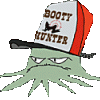
Guy on gloss black Katana going south on 71...
Disclaimer replied to Moto-Brian's topic in Daily Ride
My screenname is a laziness and literacy detector. If you can't figure out it's one J, one R, two M's, and three i's ... then you can't read, or you're mentally lazy reflecting on all other aspects in your life, most likely. I challenge people that misspell my screenname at all aspects in life. -
I challenge you in all aspects of life
-
IPO (Nut up or Shut Up) Ticker Symbol: NUSU Project Open Price: $3.95-$6.30 per share Volume: 23 Cap: N/A Corporate Description: We challenge people at all aspects of life in and around the Coshocton, OH area. Specializing in twisty roads and sheep molestation, the group is projected to be profitable in Q2 2010 upon the completion of their latest innovation - the cock gobbler combination turkey baster and rear swingarm stand.
-
Did any of them challenge anyone else at all aspects of life?
-
Just wait until Pauly or Jinu get in here and start challenging you guys on your riding* *up to and including ALL other aspects of life Then it gets ugly. Ohh, congrats again GsxrNurse - this is that thread right?
-
I challenge him at all aspects of life.
-
Laparoscopic repair — There are three different laparoscopic repair procedures: The totally extraperitoneal (TEP) repair is the most popular laparoscopic procedure [20,21]. This repair is performed in the preperitoneal, rather than the peritoneal, space. The surgeon develops a space between the peritoneum and the anterior abdominal wall so that the peritoneum is never violated. This may make visualization more difficult to the inexperienced surgeon, but in experienced hands this approach has the advantage of eliminating the risk of intraabdominal adhesion formation [21]. The transabdominal properitoneal patch (TAPP) repair involves the placement of mesh in a preperitoneal position, which is covered by peritoneum. This keeps the mesh away from the bowel. The advantages of the TAPP are that it does not leave intraperitoneal mesh and a larger piece of mesh is used. This leads to significantly lower recurrence rates than the IPOM [22]. With the intraabdominal properitoneal onlay mesh (IPOM) repair, a patch of mesh is laid across the defect in an intraabdominal position. The risk of adhesive complications from abdominal mesh is a concern of this technique [23]. This technique is rarely used currently. A systematic review concluded that there are insufficient data from randomized trials to make firm conclusions about the relative effectiveness of the TEP and TAPP repairs [24]. Laparoscopic versus open repair — Proponents of laparoscopic hernia repair cite advantages such as reduced postoperative pain, and early return to normal activity. However, serious complications have also been reported, including nerve and major vascular injury, bowel obstruction, and bladder injury [25]. Additionally, performance of a laparoscopic repair may be technically challenging if the patient has had prior prostatic surgery. Similarly, performance of a TEP may make future prostatic surgery more difficult. Systematic reviews of this topic have generally concluded that while laparoscopic repair is indeed associated with less postoperative pain and more rapid return to normal activities (including work), it takes longer to perform and may increase the risk of rare, but serious complications [26-28]. A cost-effectiveness analysis found that laparoscopic repair is associated with high incremental costs per quality-adjusted life years (QALYs) gained, although sensitivity analyses showed that there are specific situations in which laparoscopic repair may be a viable alternative, such as when reusable equipment is employed [29]. A study that investigated quality of life outcomes found that open repair was associated with at least as good, if not better outcomes, than laparoscopic repair. A large, multicenter trial performed subsequent to the above systematic reviews included 1983 patients randomly assigned to an open mesh or laparoscopic mesh repair and came to similar conclusions [30]. Patients treated laparoscopically had less pain on the day of surgery and at two weeks, and returned to work one day earlier. Laparoscopic repair resulted in significantly more recurrences at two years (10.1 versus 4.9 percent) and was associated with more complications (39 versus 33.4 percent) including more life-threatening complications (1.1 versus 0.1 percent). Primary hernia repair by laparoscopy resulted in more recurrences than open repair (10.1 versus 4.0 percent) but had similar recurrence rates to open repair when performed for treatment of recurrent hernias (10.0 versus 14.1 percent). Surgeons who had performed more than 250 laparoscopic repairs had half the rate of recurrence of surgeons who had performed fewer repairs; no similar association with experience was seen for the simpler open repairs. Unlike some earlier trials that found lower recurrence rates with laparoscopic repair [31], all the open repairs in this trial were performed as tension-free repairs with mesh [32]. Patients were older (average age 58) and less healthy (only 34 percent were ASA class I) than the general population. Laparoscopic repair may be advantageous in returning patients who perform heavy manual labor to work earlier [33], and open repair may be particularly advantageous in an older, less healthy population [30]. Open repair, as with laparoscopic repair, generally does not require overnight hospital stay. FEMORAL HERNIA REPAIR — There are two different approaches to femoral hernia repair depending upon the size of the hernia. The simplest approach is anterior to the inguinal ligament and caudad towards the upper aspect of the leg. The hernia sac and contents can often be found at this location, dissected, and reduced if the sac is small. The defect can then be repaired with either a plug of mesh or direct suture. If the defect is particularly small, the contents of the sac (eg, fat) may have to be resected to reduce the hernia. If a large volume of intraabdominal contents has protruded into the sac or if there is bowel in the defect, the best approach may be from the preperitoneal aspect of the inguinal canal. The transversus abdominis and transversalis fascia are divided and any intraabdominal contents are removed from the hernia. In addition, this approach allows the surgeon to inspect the bowel and insure its viability, which is important if a strangulated hernia is present. ANESTHESIA — Hernia repair can be performed using general, regional (spinal or epidural), or local anesthesia [34]. Laparoscopic repairs using the IPOM or TAPP approach require general anesthesia and its attendant risks. TEP repairs are often done under general anesthesia, but can be performed under spinal or epidural anesthesia. General anesthesia may be used for the open approach, but it is generally not favored unless the patient has a compelling desire to be completely anesthetized. Open repairs of inguinal or femoral hernias are most commonly performed using spinal anesthesia, continuous epidural anesthesia, or local anesthesia with or without sedation. Local anesthesia with sedation is referred to as monitored anesthesia care (MAC). It has the advantages of being completely controllable, not requiring prolonged postoperative observation, and being simple and easy to perform. The major disadvantage of local anesthesia is that it may be inadequate anesthesia for large hernias. Local anesthesia can also be performed without sedation. This is suitable only for particularly motivated individuals who are not obese. The advantages of the sedative component of MAC anesthesia are that it can be individualized to the patient's specific desires for wakefulness and can be rapidly reversed at the end of the case. The patient must always be accompanied upon leaving the surgical suite if sedation is used. Local anesthesia can be administered in two ways: as a nerve block of the ilioinguinal and iliohypogastric nerves or as direct infiltration into the proposed incision site. The former may be more difficult to achieve, but has the advantage of not causing significant soft tissue edema. Epinephrine can be added to the local anesthetic at the surgeon's discretion, but it is often omitted in patients with significant cardiac risks. Spinal or continuous epidural anesthesia provides reliable anesthesia and allows the surgeon a greater amount of maneuverability since the anesthetized area is significantly larger than the operative field. Disadvantages include incomplete anesthesia, prolonged anesthesia, urinary retention, hypotension, spinal headache, and a longer time in the recovery area. A randomized trial of local, regional, and general anesthesia in 616 adult patients in 10 hospitals undergoing open inguinal hernia repair found that local anesthesia was superior in the early postoperative period [17]. Patients who received local anesthesia had less postoperative pain and nausea, shorter time spent in the hospital (3.1 versus 6.2 hours with regional and general anesthesia), and fewer unplanned overnight admissions (3 versus 14 and 22 percent, respectively). Another multicenter randomized trial compared spinal and local anesthesia in 100 patients undergoing open hernia repair and also found local anesthesia was associated with less postoperative pain, shorter operating time, and fewer overnight stays [35]. RECUPERATION — As mentioned above, outcomes of inguinal hernia repair are generally excellent. The time period before the patient can return to work following open or laparoscopic hernia repair is typically brief, but depends upon many factors, including type of procedure, motivation, and employment status. As an example, one study found that the number of days off work was longer for patients receiving workers' compensation compared to those with commercial insurance (34 versus 13 days) [36]. Another randomized series reported patients not receiving worker's compensation had a shorter convalescence after laparoscopic than after open herniorrhaphy (8 and 11 days, respectively) [37]. Patients in sedentary employment generally may return to work within 10 days of surgery; those involved in manual labor should refrain from heavy lifting (>25 pounds) for approximately four to six weeks [37]. One small study that examined reaction times in an emergency stop simulation suggested that driving can resume 10 days following surgery [38]. STRANGULATED HERNIA REPAIR — Emergency surgery within four to six hours may prevent loss of bowel from a strangulated hernia. When bowel perforation has occurred due to necrosis from prolonged strangulation, the Shouldice operative technique is recommended. Mesh should not be used when there is gross contamination, but may be considered where contamination is minimal and broad-spectrum antibiotics administered during and for several days following surgery [1]. SURGICAL COMPLICATIONS — Ecchymosis and bruising are common accompaniments to groin hernia surgery. The type of hernia repair affects the complications that occur.
-
THE PACE BY NICK IENATSCH .... Racing involves speed, concentration and commitment; the results of a mistake are usually catastrophic because there's little room for error riding at 100 percent. Performance street riding is less intense and further from the absolute limit, but because circumstances are less controlled, mistakes and over aggressiveness can be equally catastrophic. Plenty of roadracers have sworn off street riding. "Too dangerous, too many variables and too easy to get carried away with too much speed," track specialists claim. Adrenaline-addled racers find themselves treating the street like the track, and not surprisingly, they get burned by the police, the laws of physics and the cold, harsh realities of an environment not groomed for ten-tenths riding. .... But as many of us know, a swift ride down a favorite road may be the finest way to spend a few free hours with a bike we love. And these few hours are best enjoyed riding at The Pace. .... A year after I joined Motorcyclist staff in 1984, Mitch Boehm was hired. Six months later, The Pace came into being, and we perfected it during the next few months of road testing and weekend fun rides. Now The Pace is part of my life - and a part of the Sunday morning riding group I frequent. The Pace is a street riding technique that not only keeps street riders alive, but thoroughly entertained as well. THE PACE .... The Pace focuses on bike control and de-emphasizes outright speed. Full-throttle acceleration and last minute braking aren't part of the program, effectively eliminating the two most common single-bike accident scenarios in sport riding. Cornering momentum is the name of the game, stressing strong, forceful inputs at the handlebar to place the bike correctly at the entrance of the turn and get it flicked in with little wasted time and distance. Since the throttle wasn't slammed open at the exit of the last corner, the next corner doesn't require much, if any, braking. It isn't uncommon to ride with our group and not see a brake light flash all morning. .... If the brakes are required, the front lever gets squeezed smoothly, quickly and with a good deal of force to set entrance speed in minimum time. Running in on the brakes is tantamount to running off the road, a confession that you're pushing too hard and not getting your entrance speed set early enough because you stayed on the gas too long. Running The Pace decreases your reliance on the throttle and brakes, the two easiest controls to abuse, and hones your ability to judge cornering speed, which is the most thrilling aspect of performance street riding. YOUR LANE IS YOUR LIMIT .... Crossing the centerline at any time except during a passing maneuver is intolerable, another sign that you're pushing too hard to keep up. Even when you have a clean line of sight through a left-hand kink, stay to the right of the centerline. Staying on the right side of the centerline is much more challenging than simply straightening every slight corner, and when the whole group is committed to this intelligent practice, the temptation to cheat is eliminated through peer pressure and logic. Though street riding shouldn't be described in racing terms, you can think of your lane as the race track. Leaving your lane is tantamount to a crash. .... Exact bike control has you using every inch of your lane if the circumstances permit it. In corners with a clear line of sight and no oncoming traffic, enter at the far outside of the corner, turn the bike relatively late in the corner to get a late apex at the far inside of your lane and accelerate out, just brushing the far outside of your lane as your bike stands up. Steer your bike forcefully but smoothly to minimize the transition time. Don't hammer it down because the chassis will bobble slightly as it settles, possibly carrying you off line. Since you haven't charged in on the brakes, you can get the throttle on early, before the apex, which balances and settles your bike for the drive out. .... More often than not, circumstances do not permit the full use of your lane from yellow line to white line and back again. Blind corners, oncoming traffic and gravel on the road are a few criteria that dictate a more conservative approach, so leave yourself a three or four foot margin for error, especially at the left side of the lane where errant oncoming traffic could prove fatal. Simply narrow your entrance on a blind right-harder and move your apex into your lane three feet on blind left turns in order to stay free of unseen oncoming traffic hogging the centerline. Because you're running at The Pace and not flat out, your controlled entrances offer additional time to deal with unexpected gravel or other debris in your lane; the outside wheel track is usually the cleanest through a dirty corner since a car weights its outside tires most, scrubbing more dirt off the pavement in the process, so aim for that line. A GOOD LEADER, WILLING FOLLOWERS .... The street is not a racing environment, and it takes humility, self assurance and self control to keep it that way. The leader sets the pace and monitors his mirrors for signs of raggedness in the ranks that follow, such as tucking in on straights, crossing over the yellow line and hanging off the motorcycle in the corners, If the leader pulls away, he simply slows his straight way speed slightly but continues to enjoy the corners, thus closing the ranks but missing none of the fun. The small group of three or four riders I ride with is so harmonious that the pace is identical no matter who's leading. The lead shifts occasionally with a quick hand sign, but there's never a pass for the lead with an ego on the sleeve. Make no mistake, the riding is spirited and quick in the corners. Anyone with a right arm can hammer down the straights; it's proficiency in the corners that makes The Pace come alive. .... Following distances are relatively lengthy, with the straightaways taken at more moderate speeds, providing the perfect opportunity to adjust the gaps. Keeping a good distance serves several purposes, besides being safer. Rock chips are minimized, and the police or highway patrol won't suspect a race is in progress. The Pace's style of not hanging off in corners also reduces the appearance of pushing too hard and adds a degree of maturity and sensibility in the eyes of the public and the law. There's a definite challenge to cornering quickly while sitting sedately on your bike. .... New rider indoctrination takes some time because The Pace develops very high cornering speeds and newcomers want to hammer the throttle on the exits to make up for what they lose at the entrances. Our group slows drastically when a new rider joins the ranks because our technique of moderate straightaway speed and no brakes can suck the unaware into a corner too fast, creating the most common single bike accident. With a new rider learning The Pace behind you, tap your brake lightly well before the turn to alert him and make sure he understands there's no pressure to stay with the group. .... There's plenty of ongoing communication during The Pace. A foot off the peg indicates debris in the road, and all slowing or turning intentions are signaled in advance with the left hand and arm. Turn signals are used for direction changes and passing, with a wave of the left hand to thank the cars that move right and make it easy for motorcyclists to get past. Since you don't have a death grip on the handlebar, your left hand is also free to wave to oncoming riders, a fading courtesy that we'd like to see return. If you're getting the idea The Pace is a relaxing, noncompetitive way to ride with a group, you are right. RELAX AND FLICK IT .... I'd rather spend a Sunday in the mountains riding at The Pace than a Sunday at the racetrack, it's that enjoyable. Countersteering is the name of the game; smooth, forceful steering input at the handlebar relayed to the tires' contact patches through a rigid sport bike frame. Riding at The Pace is certainly what bike manufacturers had in mind when sport bikes evolved to the street. .... But the machine isn't the most important aspect of running The Pace because you can do it on anything capable of getting through a corner. Attitude is The Pace's most important aspect: realizing the friend ahead of you isn't a competitor, respecting his right to lead the group occasionally and giving him credit for his riding skills. You must have the maturity to limit your straightaway speeds to allow the group to stay in touch and the sense to realize that racetrack tactics such as late braking and full throttle runs to redline will alienate the public and police and possibly introduce you to the unforgiving laws of gravity. When the group arrives at the destination after running The Pace, no one feels outgunned or is left with the feeling he must prove himself on the return run. If you've got some thing to prove, get on a racetrack. .... The racetrack measures your speed with a stop watch and direct competition, welcoming your aggression and gritty resolve to be the best. Performance street riding's only yardstick is the amount of enjoyment gained, not lap times, finishing position or competitors beaten. The differences are huge but not always remembered by riders who haven't discovered The Pace's cornering pureness and group involvement. Hammer on the racetrack. Pace yourself on the street. © Copyright MOTORCYCLIST Magazine November 1991 issue
-
It has the ZR1 engine detuned to 550HP and comes with an auto or a manual. PRESS RELEASE: 2009 CTS-V: CADILLAC'S ULTIMATE EXPRESSION OF PERFORMANCE AND LUXURY DETROIT - As the new CTS sport sedan earns accolades and new owners, Cadillac takes the next leap forward by premiering the 2009 CTS-V, the brand's ultimate expression of performance and luxury. Launching in the fourth quarter of 2008, the all-new CTS-V intends to combine the serious performance of an elite sports car with the poise and elegance of a prestigious luxury sedan. Part of Cadillac's acclaimed V-Series of high-performance models, CTS-V delivers an estimated 550 horsepower (410 kW). More than just power, CTS-V also includes a comprehensive suite of technical and design enhancements, including Magnetic Ride Control, an industry-first Performance Traction Management program and the addition of a new automatic transmission with paddle-shift control. "The CTS-V represents the full extension of our design, technology and performance capabilities," says Jim Taylor, Cadillac general manager. "The V-Series takes the award-winning CTS sport sedan and elevates it to a position within the club of the world's most exclusive and capable cars." As an all-new version of the CTS sport sedan was prepared for 2008, Cadillac engineers and designers began to scheme a new CTS-V that would reach much higher in terms of performance and luxury. Through the original CTS-V, Cadillac proved it could develop a very potent, high-performance sedan. The challenge for the 2009 model was enhancing every aspect in a comprehensive manner, along with reaching higher performance limits. Several key technical and design elements combine to transform the already highly capable CTS into the new V-Series. Like the existing CTS, the V-Series is the product of an intensive development process across North America and Europe, including famed test tracks and millions of miles of road. Supporting Cadillac's ongoing global expansion, the 2009 CTS-V is planned to be offered outside North America for the first time, including exports to Europe, the Middle East and Asia. Sophisticated technical enhancements The 2009 Cadillac CTS-V features the world's fastest-reacting suspension technology, Magnetic Ride Control (MRC). It uses shocks controlled by electro-magnets, rather than mechanical valves, greatly accelerating response time. Electronic sensors at all four wheels literally "read the road" every millisecond, making constant adjustments to damping to create virtually instantaneous and extremely precise control of body motions. This is of particular benefit for a high-performance sedan, helping to keep the car very composed during hard cornering, acceleration, braking and other dynamic maneuvers. MRC technology first appeared on the Cadillac STS performance sedan and has been used on some of the world's most celebrated cars, including the Chevrolet Corvette and a select few European sports cars. Enabling the precise control expected in a high-performance sedan, the CTS-V features Performance Traction Management system, borrowed from championship racing teams. This technology uses advanced electronics to manage engine torque for optimal traction during acceleration. In situations such as acceleration from a stop or exiting corners, Performance Traction Management regulates torque delivery for the best possible launch. Performance Traction Management uses the same sort of electronics as stability control programs such as Cadillac's StabiliTrak system, but applies it in a different manner. Rather than monitoring and controlling wheel slip to assist in stopping or slowing the car, PTM regulates torque delivery to instantly match the available tire grip for maximum acceleration. CTS-V also includes sophisticated braking and tire systems, in partnership with two companies renown for high-performance technology: Brembo and Michelin. Brembo brakes are at all four corners and include powerful, six-piston calipers in the front and four-piston calipers in the rear. Michelin worked with Cadillac engineers to develop its acclaimed Pilot Sport 2 (PS2) summer tire for CTS-V and its 19-inch wheels. And, of course, there is the matter of power. It has increased nearly 35 percent for the '09 CTS-V, via a new 6.2L LSA supercharged V-8 engine generating an estimated 550 hp (410 kW) and 550 lb.-ft. (745 Nm) of torque. The engine delivers this power with remarkable refinement. A sixth-generation Eaton supercharger minimizes the added noise previously associated with supercharged engines, and tightly controls intake air temperature for optimal performance. Transmission choices include either a six-speed manual or an exclusive, six-speed automatic with steering-wheel-mounted paddle shifters. It is the first automatic offered on the CTS-V. Accentuated design elements The 2009 CTS-V extends Cadillac's acclaimed design language, both inside and out. The V-Series includes all the elements of the CTS sport sedan's well received cabin, while adding some elegant and purposeful accents. V-Series will offer Recaro performance driving seats, providing excellent support for spirited driving and adding to the luxurious and purposeful interior. These new, 14-way adjustable performance seats include pneumatic bolster controls in the seat cushion and backrest. A microfiber material is added to the steering wheel, seats and shifter, providing the soft feel and luxurious appearance of suede without suede's inherent drawbacks of difficult care and moisture sensitivity. These accents on the steering wheel, seat inserts and shifter are elegant to the touch and help support high-performance driving. The car's integrated center stack is trimmed with a new Obsidian material that is also applied to the center console and door trim. Just like every CTS, the V-Series includes a hand-stitched instrument panel, door trim and center console. Leading-edge infotainment features, including a 40-gigabyte hard drive, advanced navigation system with a "pop-up" screen and Bose digital surround audio, extend to the V-Series, as well as factory-installed Bluetooth capability. The exterior of the new CTS-V amplifies the assertive stance and elegant details of the standard car, and communicates the car's remarkable capabilities. The dihedral Cadillac grille is larger to enable more air intake and features a satin finish. The raised hood encompasses the supercharged engine, and new front and rear fascias identify the vehicle as a V-Series. The car's 19-inch wheels enhance its stance on the road. The founding member of the V-Series, CTS-V was initially offered in 2004 and sold primarily in North America through the 2007 model year. The supercharged STS-V and XLR-V were added in 2006 to make the V-Series an exclusive trio of models all capable of zero-to-60 acceleration in less than five seconds with enhanced overall performance and luxury features. 2009 CADILLAC CTS-V: PRELIMINARY SPECIFICATIONS Overview Model: 2009 Cadillac CTS-V Body style / driveline: rear-drive four-door high-performance luxury sedan Construction: unitized welded steel body with direct-mounted front cradle and rubber-isolated, multi-link independent rear suspension assembly EPA vehicle class midsize car Manufacturing location: Lansing Grand River Assembly, Lansing, Michigan Key competitors: BMW M-5, Mercedes Benz E55 AMG, Mercedes Benz E63 AMG Engine Type: 6.2L supercharged V-8 (LSA) Displacement (cu in / cc): 376 / 6162 Bore & stroke (in / mm): 4.06 / 103.25 x 3.62 / 92 mm Block material: cast aluminum Cylinder head material: cast aluminum Valvetrain: overhead valve, 2 valves per cylinder; 0.492-in (12.5 mm) lift Supercharger: Gen. 6 R19 with single brick intercooler; 1.9L displacement w/4-lobe rotor design Fuel delivery: SFI; center feed Ignition: direct-mount ignition coils; extended-life dual platinum-tipped spark plugs Compression ratio: 9.0:1 Horsepower (hp / kW @ rpm): 550 / 410 @ 6200 (est) Torque (lb-ft / Nm @ rpm): 550 / 745 @ 6200 (est) Recommended fuel: premium recommended but not required Maximum engine speed (rpm): TBD Additional features: pan-mounted oil cooler; cast pistons; high-flow cylinder heads; block-mounted piston squirters; steel crankshaft w/ 8-bolt flange; close-mounted converters; acoustic engine cover; E67 engine controller Estimated fuel economy: TBD Transmissions Type: Tremec TR6060 six-speed manual; fully synchronized with single overdrive Hydra-Matic 6L90 six-speed electronically controlled automatic overdrive with torque converter clutch Gear ratios (:1) First: 2.66 4.02 Second: 1.78 2.36 Third: 1.30 1.53 Fourth: 1.00 1.15 Fifth: 0.80 0.85 Sixth: 0.63 0.67 Reverse: 2.90 3.06 Final Drive Ratio: 3.73 3.73 Chassis & Suspension Front suspension: independent SLA; 29-mm hollow stabilizer bar; elastomeric handling and ride bushings; 65-N/mm spring rate; Magnetic Ride Control with electro-magnetically controlled shocks Rear suspension: independent SLA; 24-mm solid stabilizer bar; elastomeric trailing arm bushing; 90-N/mm spring rate; Magnetic Ride Control with electro-magnetically controlled shocks Wheels: 19 x 9-inch; forged alloy, 5-lug (front) 19 x 9.5-inch, forged alloy, 5-lug (rear) Tires: 255/40R19 Michelin PS2; summer Z-rated (front) 285/35R19 Michelin PS2; summer Z-rated (rear) Brakes: four-wheel disc with four-channel ABS, hydraulic brake assist and dynamic rear brake proportioning front rotors: vented; co-cast; 380 mm x 32 mm rear rotors: vented; 373 mm x 28 mm front calipers: aluminum; six-piston rear calipers: aluminum; four-piston Steering: power-assisted rack-and-pinion; Steering ratio 16.1:1 Turns lock-to-lock TBD Turn radius (ft / m) 37.9 / 11.55 Additional features: standard: StabiliTrak (four-channel, four mode); traction control; engine drag control optional: Performance Traction Management Dimensions Exterior Wheelbase (in / mm): 113.4 / 2880 Overall length (in / mm): 191.6 / 4866 Overall width (in / mm): 72.5 / 1842 Overall height (in / mm): 58.0 / 1472 Track (in / mm): front: 61.8 / 1570 rear: 62.0 / 1575 Curb weight (lb / kg): manual: 4200 / 1905 (est) automatic: 4300 / 1950 (est) Weight distribution (% front / rear): 54 / 46 Approach Angle (deg) 10.4 Departure Angle (deg) 18.3 Tumblehome (deg. 24.6 Interior Headroom (in / mm): front: 38.8 / 986 rear: 37.2 / 944 Leg room (in / mm): front: 42.4 / 1078 rear: 35.9 / 913 Shoulder room (in / mm): front: 56.7 / 1441 rear: 57.4 / 1390 Hip room (in / mm): front: 55.1 / 1400 rear: 54.1 / 1375 Capacities EPA passenger volume (cu ft / L): 98 / 2775 EPA trunk volume (cu ft / L): 13.6 / 385 Trailer towing maximum (lb / kg): TBD Fuel tank (gal / L): 18.0 / 68 Engine oil (qt / L): TBD Cooling system (qt / L): TBD Seating Capacity (front / rear) 2 / 3 Drag Coefficient 0.355
